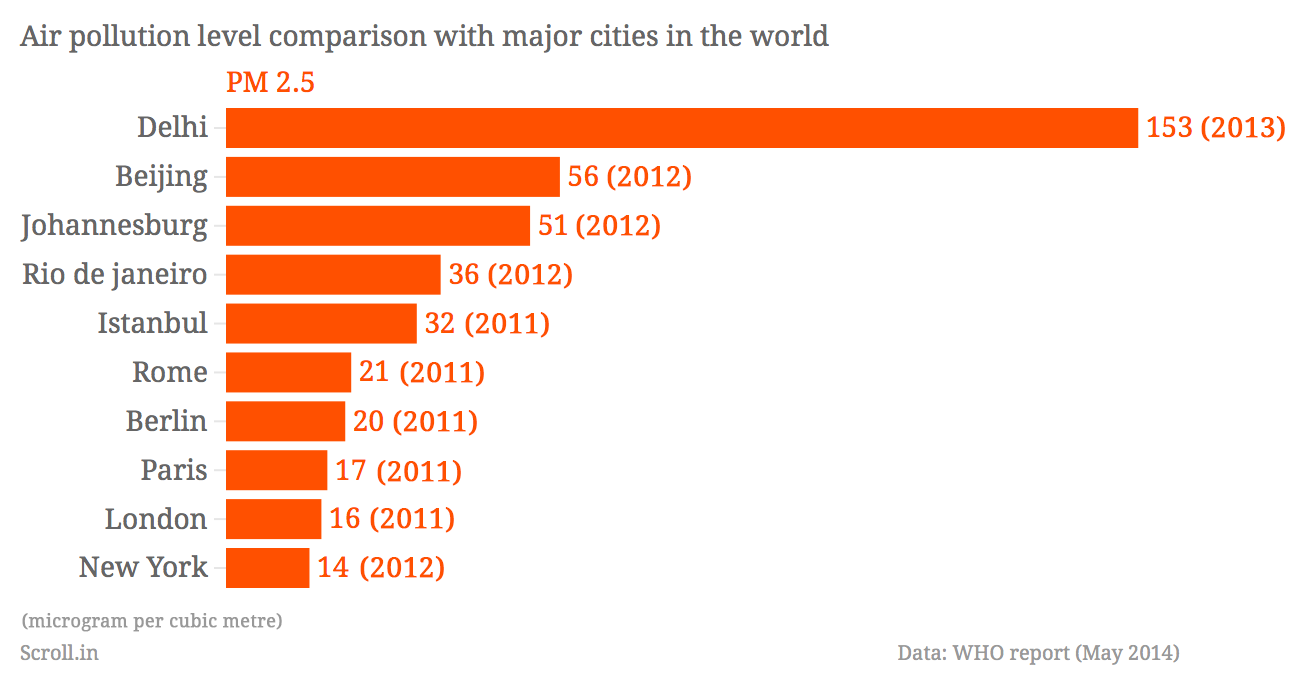The report confirms the popular belief that vehicular pollution is a concern, but argues that sources like filling stations and diesel generators pose a greater danger.
Vapour recovery system
“Unlike the West, South East Asia and China, Indian fuel stations don’t have a vapour recovery system installed in petrol pumps,” Roychowdhury said.
Petrol contains volatile organic compounds that evaporate inside the fuel tank of a vehicle and fill the space above the liquid fuel. When a vehicle is refueled, these vapours are forced out from the fuel tank by incoming fuel and, unless controlled, escape into the atmosphere through the filler neck of the fuel tank. The vapour recovery system helps prevent these emissions from evaporating into the atmosphere.
Benzene, an important component of crude oil and petrol, is harmful to humans even at minimal levels. In Delhi, the standard level of benzene should be under 5 μg/m3 (microgram per cubic metre). The report says that it has reached over 50 μg/m3 in certain areas in the city.
“Countries like the United States have had the stage-I [vapour recovery] system for years and have now graduated to stage-II,” Roychowdhury added. “However, here we are, yet to acknowledge the fact that petrol emissions are an immediate threat.”
Highest when the temperature is lower
It’s not like government bodies are unaware of the problem. In fact they’ve studied aspects of it themselves. According to a report by the Delhi government’s Centre for Occupational and Environmental Health, benzene levels are highest when the temperature is lower.
This means the air is deadliest in the early hours of the day and the late hours of the evening, which unfortunately coincides with the times that residents of this hot city, children and adults both, choose to get some fresh air.
“The level of benzene rises after sunset and peaks during the wee hours of the morning, between 4am and 6am,” said TK Joshi, director-projects at the Government’s Centre for Occupational and Environmental Health. “That is precisely the time when people go for walk or a jog. The effect of this pollutant is lethal as it mixes with your blood as you inhale. People with a weak immune system are at the greatest risk.”
Commercial units dependent on diesel generators
The capital is short of electricity, especially during the summer months, when demand spikes. This results in a profusion of diesel generators, in homes, but especially in small and medium industrial and commercial units. Experts claim that emissions from these generators release a great amount of carbon monoxide into the atmosphere.
In addition, they release air pollutants like particulate matter, nitrogen oxides and hydrocarbons.
Particulate matter like PM 2.5 and PM 10, both air pollutants, have gone 75% above permissible levels in the last five years. Just between 2000 and 2011, the PM 10 level has increased by 47%, while nitrogen dioxide has gone up by 57%.
The PM 2.5 data between November 2013 and January 2014 reveals that average levels have been 240 m/cum (microgram per cubic metre). The winter of 2013 saw a drastic jump in the levels of PM 2.5, when they reached an astonishing 575 m/cum.
Outdated technology
Vehicles are a major source of air pollution, but in India it is not only the increasing numbers but the outdated technology used in engines that is lethal. In India, Euro IV is the latest technology for car engines, but that is still 10 years behind the technology used in the United States and Europe
“The sad part is that even Euro IV emission norms, which is an outdated technology and was discarded in the US and Europe in 2006, is only followed in 13 major cities, including the Capital,” Roychowdhury said. “The rest of India is still running on Euro III emission norms, which was discarded elsewhere more than a decade ago.”
The most polluted city in the world
In May, a World Health Organisation study stated that the Indian Capital had overtaken the Chinese capital on a most unfortunate metric: its level of pollution. Delhi is now the most polluted city in the world, with an annual average of 153 micrograms of small particulates, known as PM 2.5. The study was conducted across 1,600 cities worldwide.


An Indian Institute of Technology study in partnership with the University of Minnesota and University of Colorado revealed that, since 1991 there had been a 100% increase in deaths in Delhi due to cardiovascular and respiratory diseases and hospital admissions for chronic obstructive pulmonary diseases linked to pollution.
“The figures have drastically shot up in the last decade,” one of the experts who conducted the study at IIT Roorkee, Professor Bhola Ram Gurjar said. “In 2010 the total mortality cases went up to 18,229.”
Figures tell only part of the tale.











